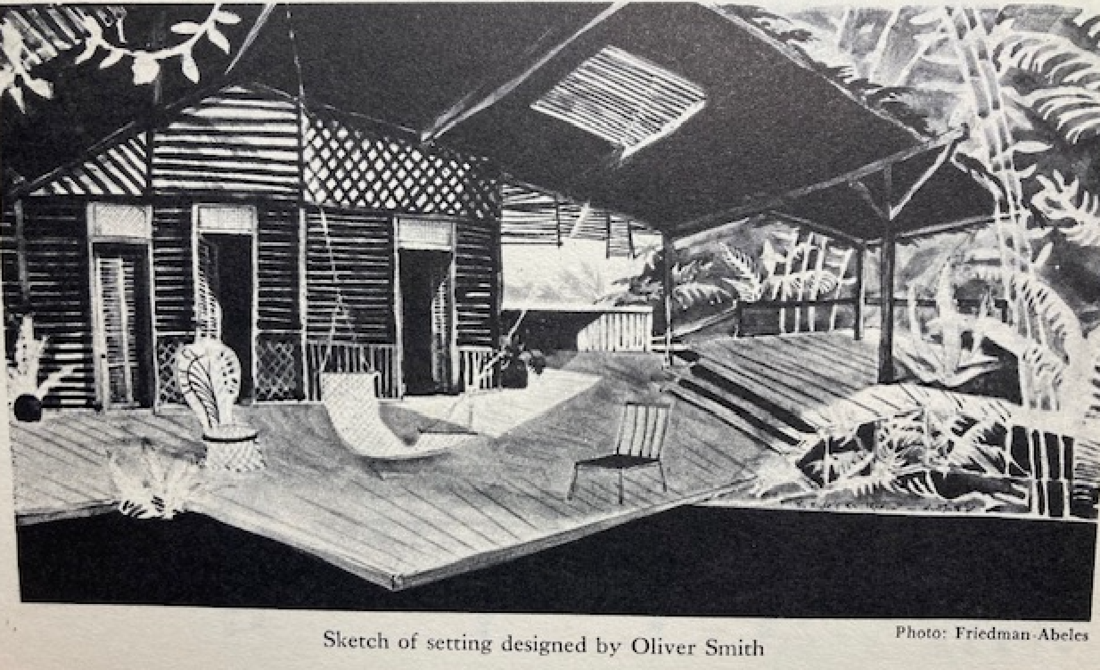
Original set for Night of the Iguana
*
Español
January 21, 2024
by Philip Gambone
After the great success of his first Broadway hit, The Glass Menagerie in 1945, Tennessee Williams fell into a depression. "Probably," he explained in his Memoirs, "because I never believed that anything would continue, would hold." Williams decided he needed a rest and that Mexico, which he had enjoyed so much in the summer of 1940, would be the place. He hoped it would turn out to be "The Paris of World War II (Post-war)."
In Memoirs, Williams wrote that he took a train to Mexico City via Dallas, passing through the Sierra Madre mountains—"so lovely in those days"—and checked in at the Hotel Reforma. This does not square with what he wrote in a letter dated June 6, 1945, to his friend Donald Windham, under the heading Hotel Regis, in which he said that he "flew from Dallas, though I still hate flying."

Night of the Iguana Playbill
*
Whatever the means by which he got to Mexico City, Williams was lonely when he first arrived, but soon met Leonard Bernstein, who invited him to lunch "with some friends in the International Set." From then on, he began going out socially "all the time." He met Rosa Covarrubias (the wife of the painter and art historian), choreographer George Balanchine, and the screen idols Dolores del Rio and Norman Foster. Hobnobbing with society was "refreshing" enough that he found his stay in Mexico City to be "more than tolerable."
He heard Carlos Chávez conduct Shostakovich's Fifth Symphony—"really thrilled by it," he told Windham—and attended a bull fight, which was both "sickening and fascinating." At the opera, he saw Tristan and Isolde. The tenor, lying under a tree and having delirious visions, was so fat that a "skinny little monkey of a Mexican singer" was reduced to patting him sweetly on the stomach and tucking him in, "with despairing but tender glances at the audience."
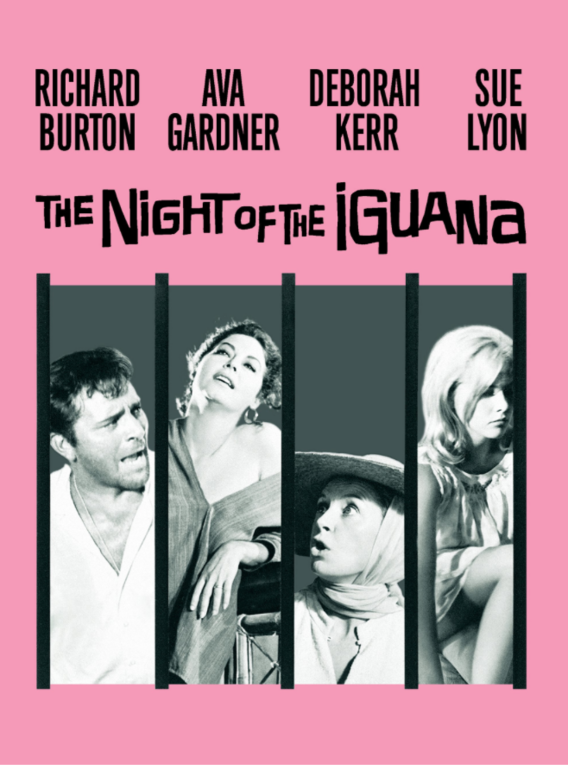
Night of the Iguana Movie Poster
*
Williams also met a rich man who gave "strictly male parties in his apartment every Saturday night." The parties were dances—Williams called them "tequila-dansants"—and it was at these affairs that he learned "to follow quite well." Being too short to lead, Williams was only too happy to cede the macho role to the Mexicans.
There was, too, a transient love affair with a Mexican student—"extremely well formed in body and spirit"—whom Williams met on the street. "I knew no Spanish and he knew little English but we spent that night in my room at the annex of a little hotel called the Lincoln, which didn't mind a guest bringing a guest."
With all this socializing and amorous play, it's hard to take seriously Williams' claim in Memoirs that he did a great deal of writing while in Mexico City. But he did manage to complete a short story and "perhaps a bit more about Blanche."
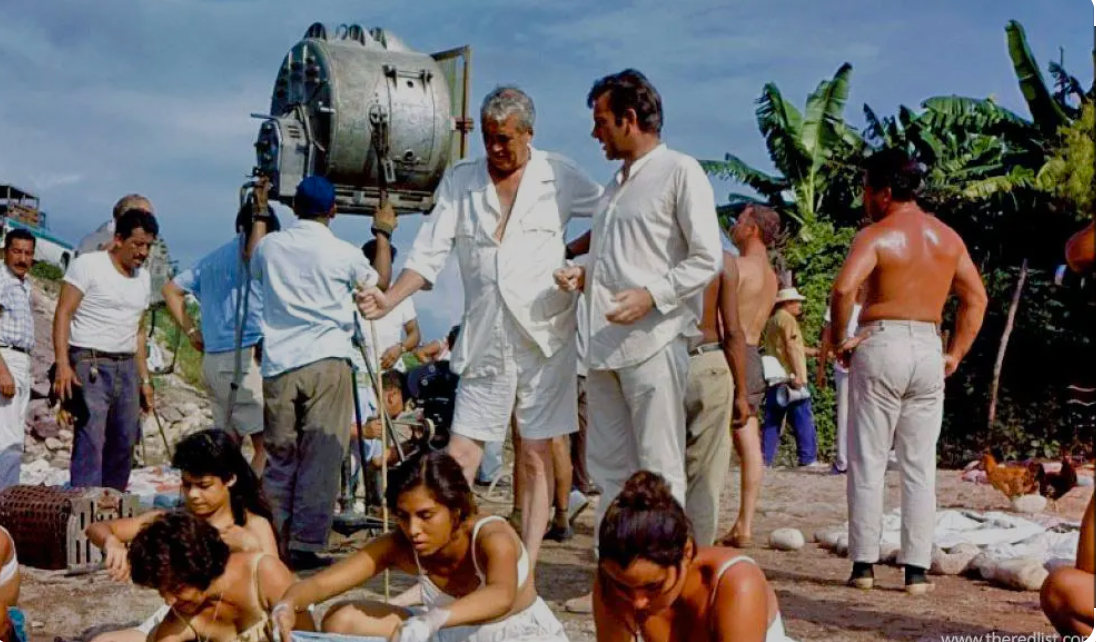
John Huston on film set
*
The ever-restless Williams moved on to Cuernavaca, but took such a "curious dislike" to the place that, with no more buses returning that day, he hired a taxi to drive him all the way back to Mexico City. Along the highway, the cool and deliciously fragrant pine-scented woods refreshed him and rekindled his desire to resume intimacy with the student and the Saturday night dances. Almost thirty years later, when he came to write Memoirs, he added, "I still believe that the open country of Mexico is the most beautiful I have seen in the world."
At some point that summer, Williams also seems to have visited Lake Chapala, where he stayed at the home of poet Witter Bynner. There he wrote for several hours every day, working on poems, an essay, and a play. He also made time for swimming and drinking with the locals.
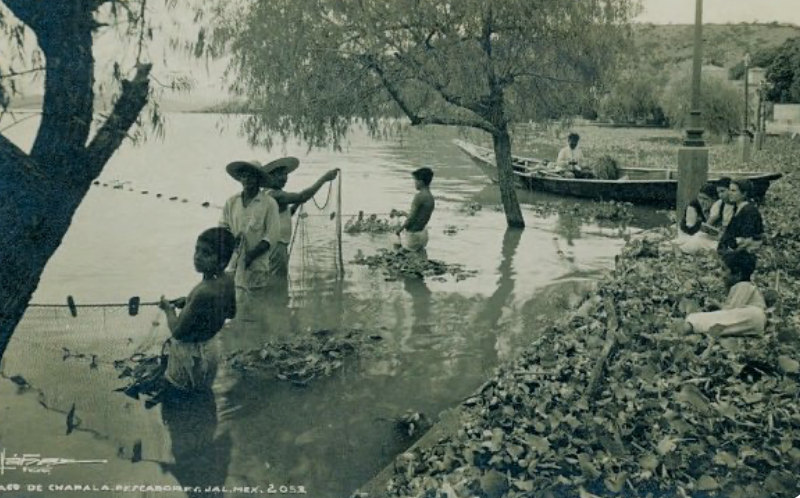
Lake Chapala 1940s
*
When he returned to the States, Williams admitted that Mexico was "not as physically healthy as a summer on the northern coast but it has a richness that soaks into you and makes you feel as if your spirit had been feeding on something after a long starvation. I have left there physically tired (from the activity and the altitude) but rested in my heart, as it were! The best good is knowing that there is a place I can go to and be in tune with when I've got to rest somewhere."
Out of Williams' visits to Mexico came his last Broadway success, The Night of the Iguana. The play is, he said, "rooted in the atmosphere and discoveries of summer of 1940." He had first used that "atmosphere" in his short story of the same name. (I wrote about it in last week's column.)
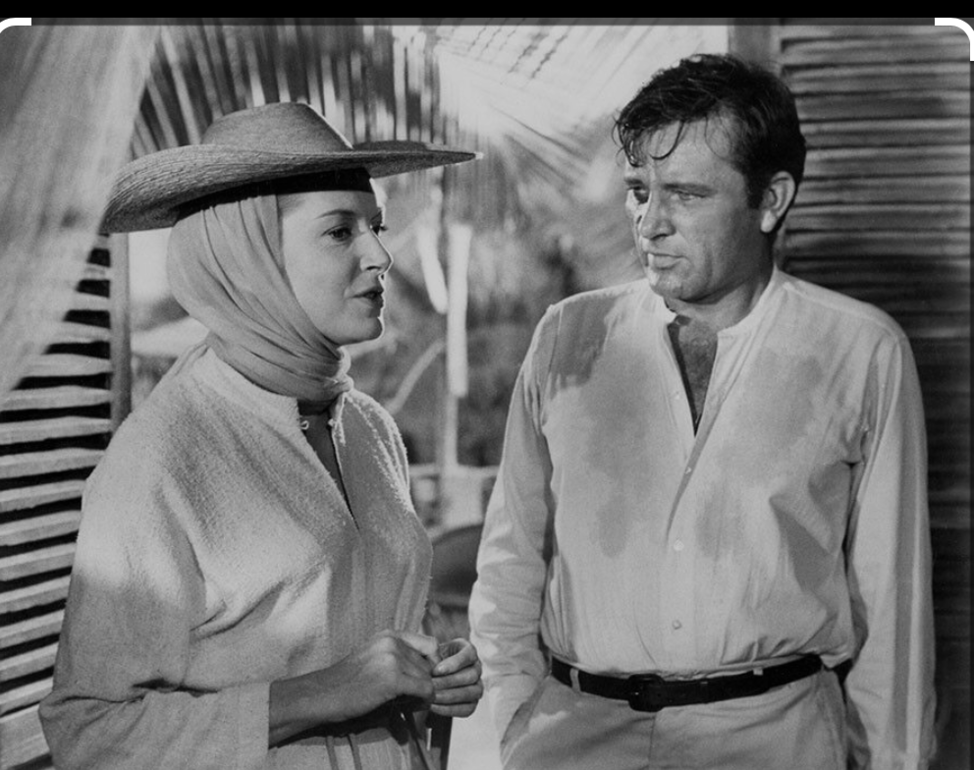
Deborah Kerr and Richard Burton
*
When Williams came to rework the material of his short story into a play, he decided that he had to tone down the homosexual relationship between the two men in the earlier story. Out they went. In the place of the two unstable gay men, Williams created a new character, the Reverend T. Lawrence Shannon, a 35-year-old defrocked minister, "who has cracked up before and is going to crack up again."
When the curtain rises on Act I, it is 1940. Shannon arrives at a Bohemian hotel, the Costa Verde, which Williams modeled after the Veracruz hotel where he had stayed in 1940. It's the kind of place that caters to "folks that like to rough it a little." Shannon, who is leading a group of women from a Baptist Female College on a tour of Mexico, has diverted the tour to this hotel, run by an acquaintance of his, Maxine Faulk, a brassy, "rapaciously lusty" dame, originally played on stage by Bette Davis. One of the Baptist women, a "butch vocal teacher" named Judith Fellowes, is in a rage over the change in the itinerary and threatens to get Shannon, who has absconded with the keys to the tour bus, fired. She's also aiming to pin a statutory rape charge on him because of intimacies she accuses him of having with one of the teen-aged members of the tour group.
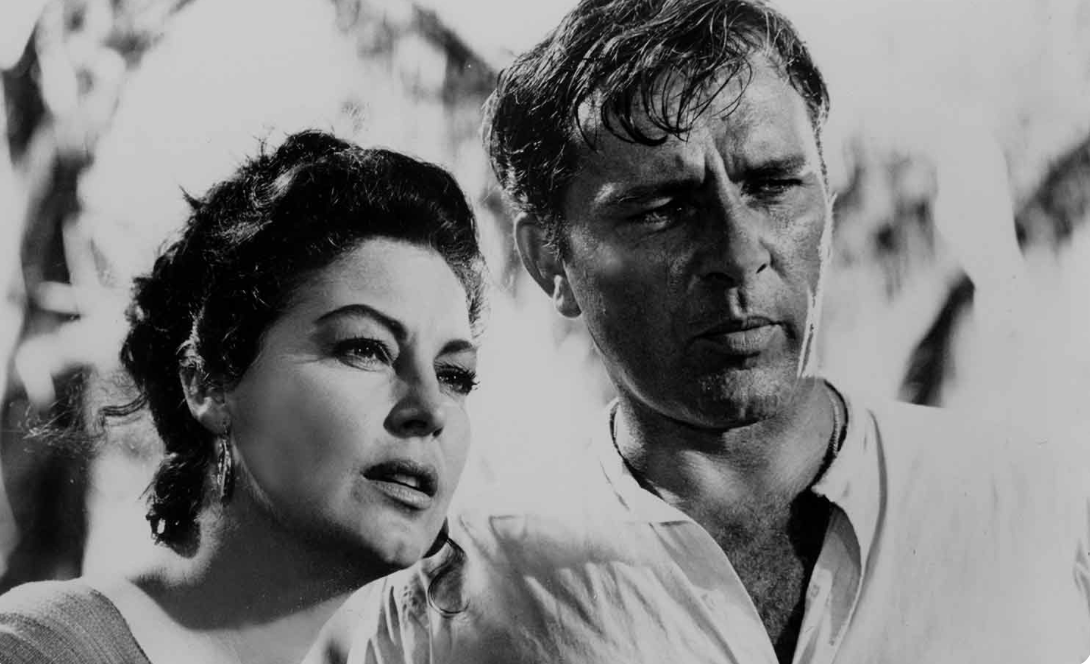
Richard Burton and Eva Gardner
*
"I'm at the end of my rope," Shannon tells Maxine. Like so many of Williams' characters, Shannon is trying to retain some pride in himself despite feeling that his faith in essential human goodness has shattered. Into this steamy situation enter two more lost souls, Hannah Jelkes (reconstituted from the short story's Edith Jelkes), a New England spinster pushing forty, and her 97-year-old grandfather, Nonno. "We travel together," she tells them, adding that they pay their way as they go, she by selling watercolor paintings and Nonno—"the world's oldest and practicing poet"—by giving recitations of his work. Near destitution, Hannah places herself at Maxine's mercy. Maxine reluctantly lets them have a room.
Williams underscores one of his perennial themes here, the need for kind and intimate human contact. All the principal players—Shannon, Hannah, Nonno, Maxine, and Judith Fellowes, the enraged tourist—are in search of some way to reconcile the body and the soul, what one critic has called "the tension of opposites that one is asked to endure."

Bette Davis as Maxine Faulk, stage
*
In Act II, as sunset approaches, Maxine is setting up folding card tables on the veranda for the evening meal. She'd like to move Hannah and her grandfather out, but Hannah doesn't want to change hotels. We also meet Charlotte Goodall, the teenager with whom Shannon had a liaison back when they were in Mexico City. She wants to continue where they let off, but Shannon doesn't want to "complicate" his life. "Honey girl," he tells her, "don't you know that nothing worse could happen to a girl in your, your … unstable condition … than to get emotionally mixed up with a man in my unstable condition, huh?"
Shannon and Hannah—"like two actors in a play preparing gravely for a performance which may be the last one"—begin to talk. She's curious about his past and he confesses to her the circumstances of his being defrocked. Now, he says, he is lost in a country that has been "destroyed in its flesh and corrupted in its spirit by its gold-hungry conquistadors."
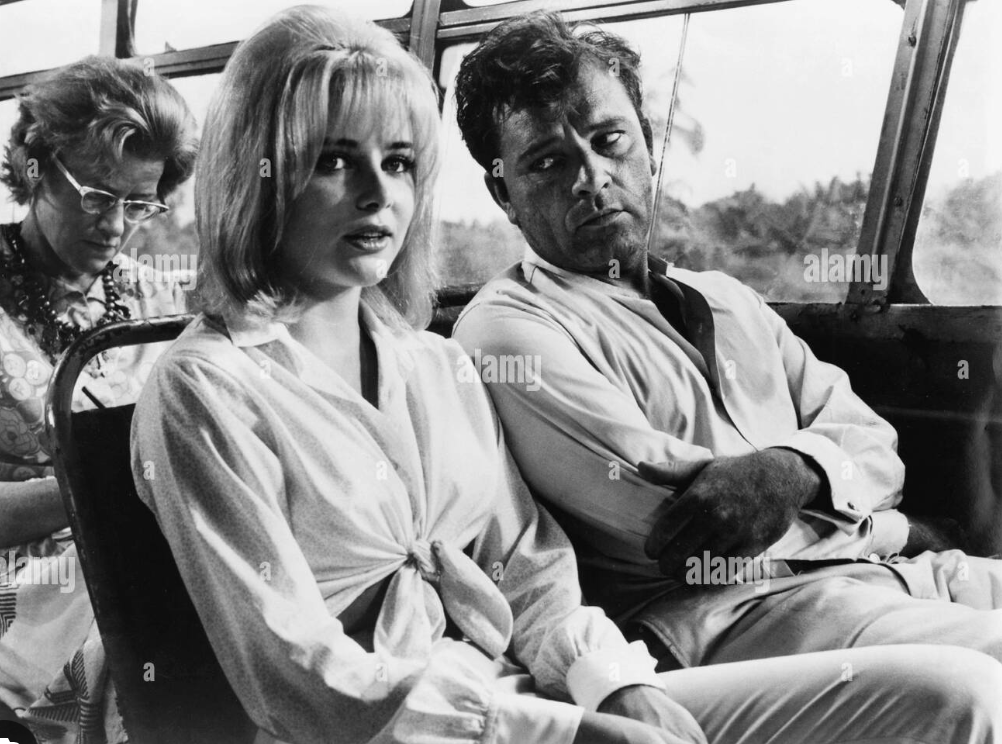
Richard Burton and Sue Lyon
*
As a storm begins to gather, the hotel's two Mexican "boys" appear with an iguana they have caught and tie the agitated creature to a post beneath the veranda. (This is one of the few details Williams retained from the earlier short story.) The storm, or rather storms—meteorological and interpersonal—continue to mount in fury. With Maxine and Shannon at each other's throats, Hannah gently invites Shannon to imagine a more decent, caring way to interact with people.
Act III takes place several hours later. Here Williams gathers all the disparate elements of the first two acts into his denouement. Hannah, long-suffering and patiently abiding the ups and downs of life, delivers her credo: "People can reach each other, even if it's just for one night only. A little understanding exchanged between them, a wanting to help each other through nights like this. Nothing human disgusts me unless it's unkind, violent."
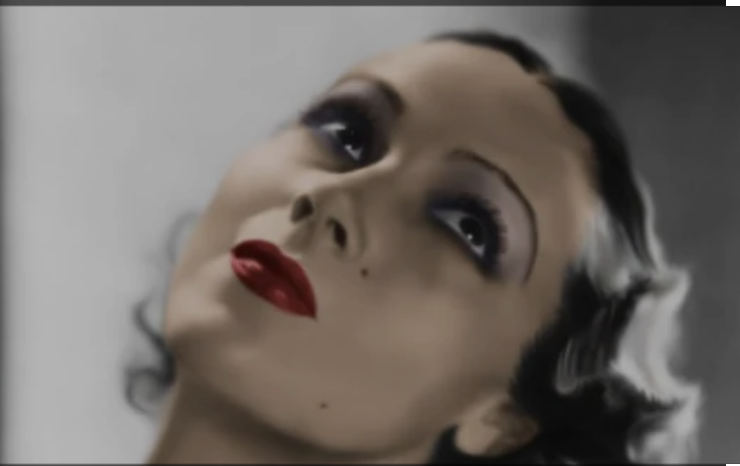
Dolores del Rio
*
She asks Shannon to cut loose the iguana, and he complies. When Maxine asks him what he's doing, he says, "I cut loose one of God's creatures at the end of the rope." At the curtain fall, it's left ambiguous whether Shannon—and, for that matter, all the major characters—cut themselves free of their self-inflicted tethers in order to ease the panic they feel, or whether they'll just keep floundering, taking care, as best they can, of the disarray of their lives.
The Night of the Iguana has its faults. The play is marred by details that don't add up, shaky symbolism, gratuitous grotesqueries, and unnecessary verbosity. It opened on December 28, 1961 to a "muted initial reception." But accolades soon followed. It won the New York Drama Critics Circle Award. A movie version, directed by John Huston, followed in 1964. The stellar cast included Richard Burton (Shannon), Ava Gardner (Maxine), Deborah Kerr (Hannah) and Sue Lyons (Charlotte Goodall). It garnered four Academy Award nominations.
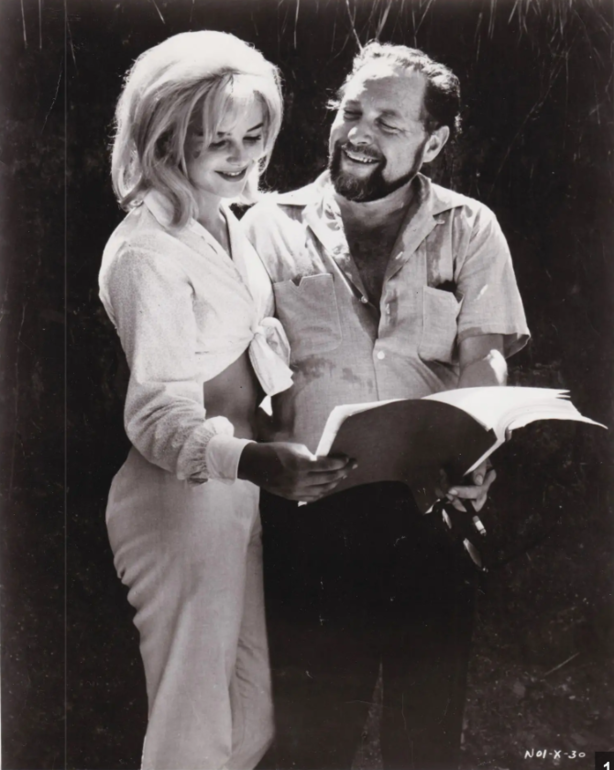
Tennessee Williams and Sue Lyon
*
Williams' sojourns in Mexico did not exorcize his demons, nor did they provide much solace, as biographer John Lahr put it, for the "problematic nature of his existence." But after one of those trips, he told a friend, "To feel some humiliation and a great deal of sorrow at times is inevitable. But feeling guilty is foolish. I am a deeper and warmer and kinder man for my deviation. More conscious of need in others, and what power I have to express the human heart must be in large part due to this circumstance."
After the 1945 visit, Williams never returned to Mexico.
**************
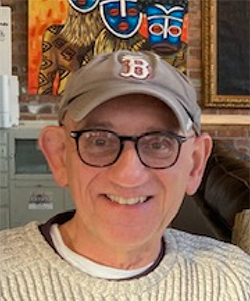
Philip Gambone, a retired high school English teacher, also taught creative and expository writing at Harvard for twenty-eight years. He is the author of five books, most recently As Far As I Can Tell: Finding My Father in World War II, which was named one of the Best Books of 2020 by the Boston Globe. It is available through Amazon, at the Biblioteca bookshop, and at Aurora Books off the Calzada de la Aurora.
**************
*****
Please contribute to Lokkal,
SMA's online collective:
 ***
***
Discover Lokkal:
Watch the two-minute video below.
Then, just below that, scroll down SMA's Community Wall.
Mission

Visit SMA's Social Network
Contact / Contactar

